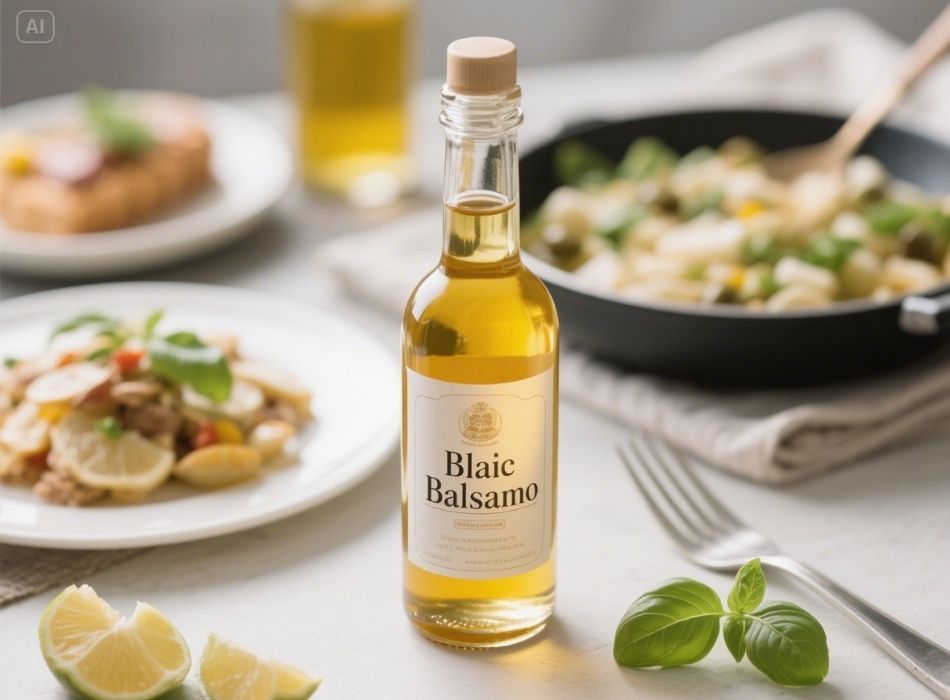When it comes to versatile and flavorful kitchen ingredients, white balsamic vinegar often doesn’t get the attention it deserves. While traditional dark balsamic vinegar steals much of the spotlight, white balsamic vinegar offers its unique charm, making it a must-have for home cooks and professional chefs.
This article explores white balsamic vinegar, its production, and its use to elevate cooking. Whether you’re a seasoned food enthusiast or someone looking to experiment with new ingredients, you’ll find everything you need to know about this overlooked culinary gem.
What Is White Balsamic Vinegar?
At its core, white balsamic vinegar is a slightly sweeter, lighter variation of traditional balsamic vinegar. Originating from Italy, a country renowned for gastronomic treasures, white balsamic vinegar shares the same heritage as its dark counterpart but differs in its production process and taste profile.
How It’s Made:
White balsamic vinegar is crafted from Trebbiano grapes, just like traditional balsamic vinegar. The difference lies in the cooking process. Instead of cooking the grape must (freshly crushed grape juice) until it caramelizes, which gives dark balsamic its rich, brown colour, the must for white balsamic is pressure-cooked at lower temperatures. This prevents browning and results in a golden or pale amber liquid.
It’s then aged in stainless steel or lightly toasted wooden barrels for a delicate, nuanced flavour. This shorter and gentler ageing process creates a tangy, slightly sweet vinegar much lighter in appearance and taste.
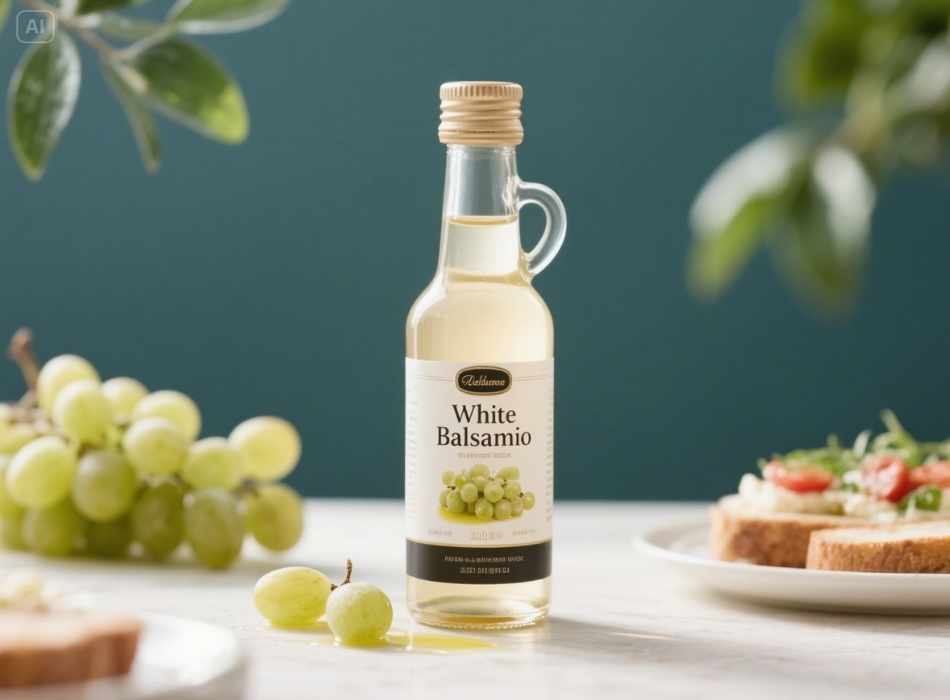
The Unique Benefits of White Balsamic Vinegar
Why should you opt for white balsamic vinegar over the conventional dark version? Here’s what sets it apart:
1. Subtle Flavour Balance
While traditional balsamic vinegar has an intense, syrupy flavour, white balsamic is much milder with a balanced blend of tart and sweet. This makes it perfect for dishes that need an understated touch of acidity without overpowering the other ingredients.
2. Aesthetic Appeal
Unlike dark balsamic, which can stain dishes or overwhelm the visual presentation of food, white balsamic vinegar’s lighter colour keeps your plate looking clean and vibrant. This is especially important for dishes like salads or light-colored sauces, where presentation plays a significant role.
3. Versatility in Cooking
From dressings to marinades and desserts, white balsamic vinegar offers unmatched versatility. Its subtle sweetness complements a wide range of flavours, making it a go-to for anything savoury or sweet.
4. Ease of Pairing with Wine
White balsamic vinegar’s delicate flavour pairs more harmoniously with various wines. Its lower acidity level means it won’t interfere with the wine-tasting experience, unlike the often overwhelming tang of dark balsamic. White balsamic vinegar is the perfect choice for enhancing the flavours of white wines, such as Pinot Grigio or Sauvignon Blanc. It can also be used in cooking to add depth and complexity to dishes that call for wine as an ingredient.
5. Health Benefits
White balsamic vinegar boasts several health benefits, making it a healthy addition to any diet. Its antioxidants help fight inflammation and reduce the risk of diseases like heart disease and cancer. In addition, its low calorie and sugar content make it a healthier alternative to other sweeteners, such as honey or maple syrup. Incorporating white balsamic vinegar into your meals can aid digestion and improve gut health. Its acidic properties can help balance the PH levels in your body, promoting a healthy immune system and overall well-being.
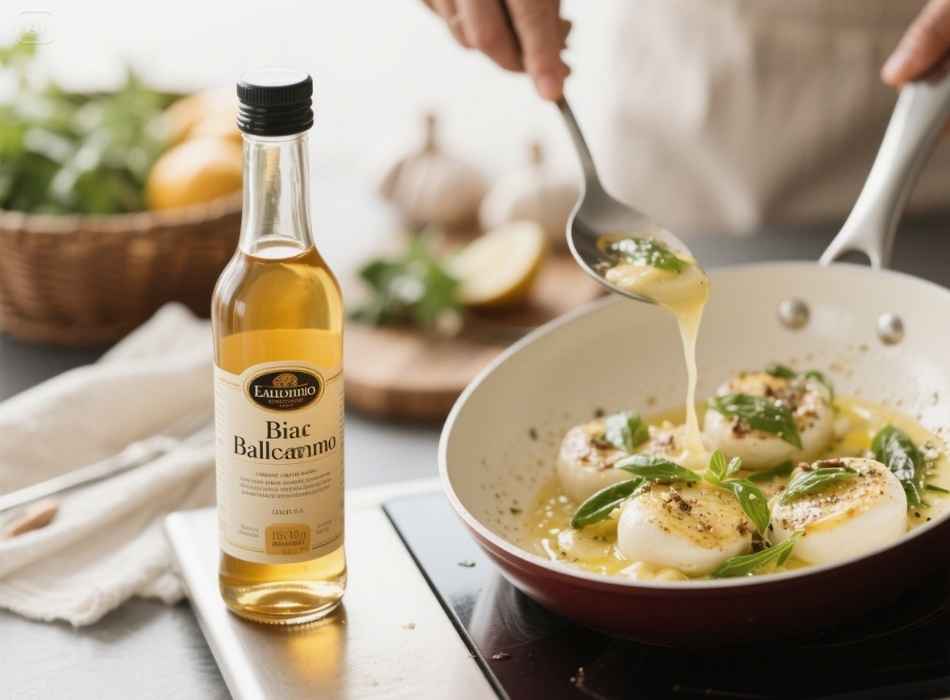
6. Versatility in Cooking
One of the most significant advantages of white balsamic vinegar is its versatility in cooking. It can be used as a marinade, dressing, or added to sauces and dips for extra flavour. Its sweet yet tangy taste makes it a popular choice for salad dressings and vinaigrettes. It can also enhance the flavour of vegetables, meats, and seafood dishes. White balsamic vinegar is also an excellent addition to fruit-based desserts, adding a unique twist to traditional recipes.
How To Use White Balsamic Vinegar in Your Cooking
White balsamic vinegar can elevate a variety of dishes with its sweet-tart brightness. Here are some ideas to get you started:
1. Salad Dressings
White balsamic vinegar is a superstar in vinaigrettes. Combine it with extra virgin olive oil, a pinch of salt, and freshly ground pepper for a simple yet flavorful dressing. Add a dollop of Dijon mustard or a touch of honey to take it up a notch.
Pro Tip: Drizzle it over an arugula and pear salad topped with goat cheese and walnuts for a show-stopping appetizer.
2. Marinades for Proteins
Mix white balsamic vinegar with garlic, fresh herbs, and citrus juice to create a quick and flavorful marinade for chicken, fish, or tofu. Its mild acidity tenderizes proteins while enhancing their natural flavours.
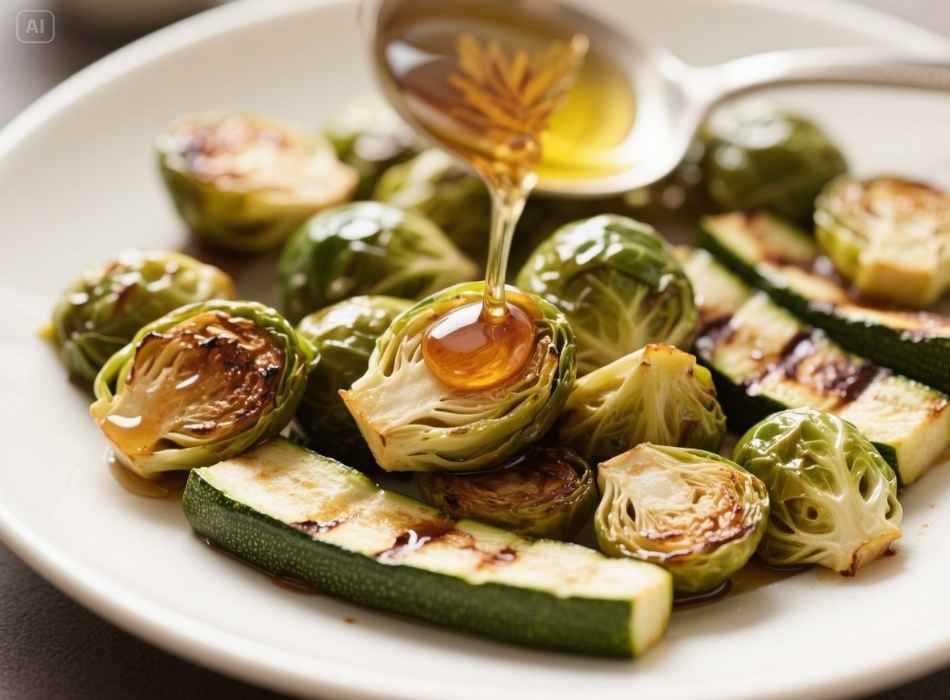
3. Glazes for Vegetables
Whether roasting Brussels sprouts or grilling zucchini, a quick glaze made with white balsamic, olive oil, and maple syrup adds a caramelized depth without overpowering the vegetables’ natural taste.
4. Fruit Enhancer
Try drizzling white balsamic vinegar over fresh stone fruits like peaches or nectarines. The acidity balances the fruit’s sweetness, creating a simple and elegant dessert.
Pro Tip: Add a scoop of vanilla ice cream for an indulgent finish!
5. Cocktail Ingredient
Yes, white balsamic vinegar works wonders in cocktails, too! Add a splash to sparkling water, gin, or vodka with fresh fruit and herbs for a refreshing twist on your usual drink.
6. Soup Finishing Touch
For an unexpected burst of flavour, drizzle a small amount of white balsamic vinegar over creamy soups like mushroom or butternut squash. It brightens the dish and balances the richness. Add a few drops as a finishing touch to homemade vegetable or chicken broth for an extra layer of depth and complexity.
7. Dessert Topping
White balsamic vinegar can benefit not only savoury dishes but also desserts! Try drizzling it over fresh berries, ice cream, or even pound cake for a tangy and sweet contrast. Mix it with honey to create a delicious fruit tarts or pies glaze.
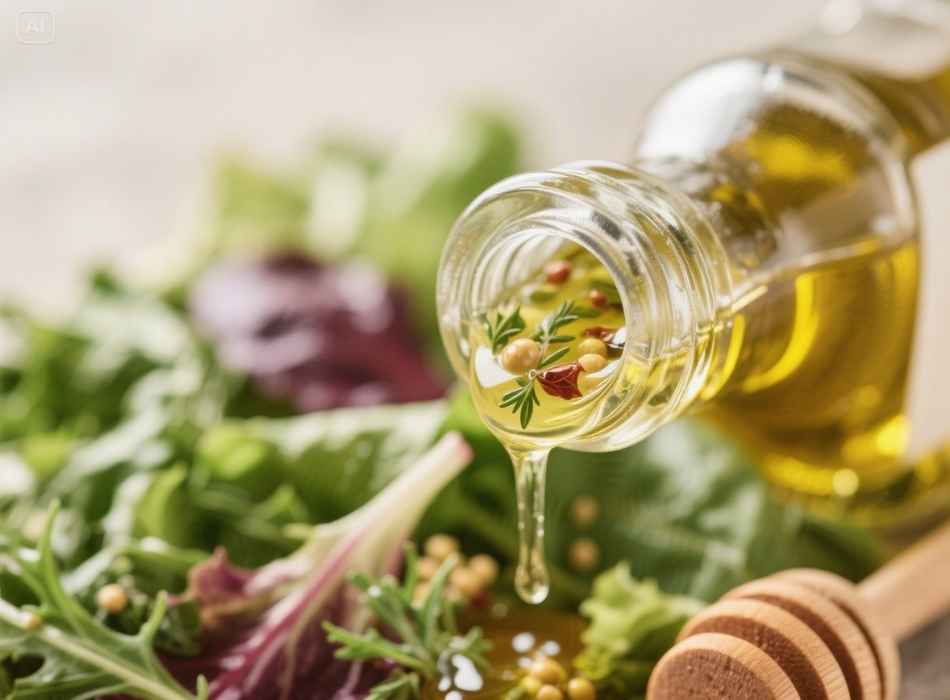
8. Salad Dressing Base
One of the most common uses for white balsamic vinegar is as a salad dressing base. Its light and sweet flavour pairs well with various greens and other ingredients. Mix it with olive oil, Dijon mustard, and herbs for a delicious vinaigrette. You can also add a touch of honey or maple syrup to balance out the acidity.
9. Marinade Ingredient
White balsamic vinegar is also great as a marinade ingredient for meats, especially chicken and pork. Its tangy flavour helps tenderize the meat while adding a subtle sweetness. Mix it with olive oil, garlic, herbs, and spices for an easy and flavorful marinade. Let your protein sit in the mixture for 30 minutes before cooking to infuse the flavours.
Marinating is a great way to add flavour and tenderness to meats, and white balsamic vinegar is a fantastic ingredient to include in your marinade recipe. It not only adds a tangy sweetness, but it also helps tenderize the meat for a juicier and more flavorful result.
You can get creative with your flavour combinations when using white balsamic vinegar as a marinade ingredient. Some popular options include mixing it with olive oil, garlic, rosemary or thyme, and spices like paprika or cumin. You can also add some citrus juice for an extra zing.
Selecting and Storing White Balsamic Vinegar

When shopping for white balsamic vinegar, look for authentic products from Italy, particularly those labelled “Aceto Balsamico Bianco.” Be cautious of overly cheap options containing additives or artificial flavouring.
Storage Tips:
- Keep your vinegar in a cool, dark place, away from direct sunlight.
- Permanently seal the bottle tightly after use to maintain its freshness.
Properly stored, white balsamic vinegar can last for years, making it a worthy investment for your pantry.
The Health Benefits of White Balsamic Vinegar
Not only does white balsamic vinegar taste incredible, but it also offers some surprising health perks:
- Rich in Antioxidants: Made from grapes, it contains polyphenols, which help combat oxidative stress in the body.
- Low in Calories: With just 14 calories per tablespoon, it’s a waistline-friendly way to add flavour to meals.
- Digestive Aid: The mild acidity can promote healthy digestion, especially when paired with olive oil.
- Blood Sugar Regulation: Studies have shown that white balsamic vinegar can help regulate blood sugar levels, making it an excellent option for those with diabetes.
- Heart Health: The polyphenols in white balsamic vinegar may also help lower cholesterol and improve heart health.
White Balsamic Vinegar vs. Dark Balsamic Vinegar
Still wondering when to use white balsamic over traditional dark balsamic? Here’s a quick comparison to help you decide:
| Feature | White Balsamic | Dark Balsamic |
|---|---|---|
| Flavor | Light, tangy, slightly sweet | Rich, robust, sweet-tart |
| Appearance | Golden or pale amber | Dark brown, syrupy |
| Best Used For | Salads, marinades, cocktails | Drizzles, cheese pairings |
| Visual Impact | Doesn’t stain dishes | Can overpower presentation |
Both have their unique place in the kitchen, but white balsamic vinegar stands out for its subtle versatility!
Discover the Culinary Magic of White Balsamic
White balsamic vinegar isn’t just an alternative to its dark counterpart; it’s a culinary superstar in its own right. Its light flavour, aesthetic appeal, and versatility make it a must-have for anyone passionate about creating vibrant and flavorful dishes.
Next time at the grocery store, pick up a bottle of white balsamic vinegar and experiment with our suggestions. Trust us, it might become your new secret ingredient.
Looking for more ways to enhance your cooking skills? Check out our recipe collection for inspiration and discover creative ways to use white balsamic vinegar today!







